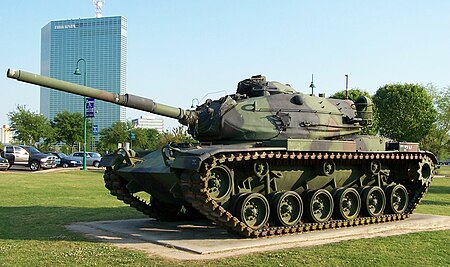Addiscombe Military Seminary
| |||||||||||||||||
Read other articles:

This article does not cite any sources. Please help improve this article by adding citations to reliable sources. Unsourced material may be challenged and removed.Find sources: Mohadevpur Sarba Mongala (Pilot) High School – news · newspapers · books · scholar · JSTOR (December 2018) (Learn how and when to remove this message) Public school in Naogaon, BangladeshMohadevpur Sarba Mongala (Pilot) High Schoolমহাদেবপুর সর্বমঙ্�…

Sporting event delegationDenmark at the1976 Summer OlympicsIOC codeDENNOCNational Olympic Committee and Sports Confederation of DenmarkWebsitewww.dif.dk (in Danish and English)in MontrealCompetitors66 (56 men, 10 women) in 15 sportsFlag bearer Judith AndersenMedalsRanked 24th Gold 1 Silver 0 Bronze 2 Total 3 Summer Olympics appearances (overview)189619001904190819121920192419281932193619481952195619601964196819721976198019841988199219962000200420082012201620202024Other related appearan…

منتخب جنوب إفريقيا لكرة القدم للسيدات بلد الرياضة جنوب إفريقيا الفئة كرة القدم للسيدات رمز الفيفا RSA تاريخ التأسيس 30 مايو 1993 الموقع الرسمي الموقع الرسمي المدرب ديزيري إليس مشاركات كأس العالم المشاركات 2 (أولها في سنة 2019) أفضل نتيجة الدور الأول 2019 بطولة أفر…

For the 1976 film, see High Velocity (film). This article needs additional citations for verification. Please help improve this article by adding citations to reliable sources. Unsourced material may be challenged and removed.Find sources: High Velocity – news · newspapers · books · scholar · JSTOR (October 2012) (Learn how and when to remove this message) 1995 video gameHigh Velocity - Mountain Racing ChallengeJapanese cover artDeveloper(s)CavePublisher(…

Gudea dari Lagash (Museum Louvre) Sejarah Sumeria merupakan prasejarah yang diambil untuk memasukkan periode-periode Ubaid dan Uruk, terbentang pada milenium ke-5 sampai ke-3 SM, yang berakhir dengan jatuhnya Dinasti Ketiga Ur pada sekitar tahun 2004 SM, diikuti oleh periode transisi negara-negara Amori sebelum bangkitnya Babilonia pada abad ke-18 SM. Pemukiman pertama di selatan Mesopotamia adalah Eridu. Bangsa Sumeria menyatakan bahwa peradaban mereka telah dibawa, terbentuk sepenuhnya, ke kot…

Blue Mountain TunnelThe eastern portals of the Blue Mountain Tunnel, March 2017.OverviewLocationBlue MountainRoute I-76 / Penna TurnpikeCrossesBlue MountainOperationOpened1940Reopened1960OperatorPennsylvania Turnpike CommissionTechnicalLength4,339 feet (1,322 m)No. of lanes4 (two in each direction) The Blue Mountain Tunnel is one of two tunnels through Blue Mountain in Pennsylvania, located west of Newburg. It is one of seven tunnels completed for the Pennsylvania Turnpike mainline, and at …

Sorang gadis memasukkan pena ke dalam lubang hidung Fetisisme hidung,[1] parsialisme hidung, atau nasofilia[2][3] adalah parsialisme (atau parafilia) yang melibatkan hidung. Parafilia ini mungkin berupa ketertarikan seksual pada bentuk tertentu dari variasi penampilan fisik (seperti bentuk dan ukuran hidung), atau area tertentu (misalnya; batang atau lubang hidung). Fetisisme dapat berupa keinginan untuk melakukan kontak fisik dan interaksi yang sebenarnya, atau hanya ber…

2002 Punjab provincial election ← 1997 10 October 2002 2008 → All 371 seats in the Provincial Assembly186 seats needed for a majority First party Second party Third party Leader Chaudhry Pervaiz Elahi Qasim Zia Chaudhary Nisar Ali Khan Party PML(Q) PPP PML(N) Leader's seat Rahim Yar Khan-VIII Lahore-XIX Not contest Seats won 210 79 47 Seat change 210 76 164 Popular vote 6,144,813 4,145,106 3,028,856 Percentage 33.33 22.48% 16.43% Map of the…

Legislative branch of the state government of Montana This article needs additional citations for verification. Please help improve this article by adding citations to reliable sources. Unsourced material may be challenged and removed.Find sources: Montana Legislature – news · newspapers · books · scholar · JSTOR (December 2021) (Learn how and when to remove this message) Montana State LegislatureTypeTypeBicameral HousesSenateHouse of RepresentativesTerm …

Slave trade – 16th to 19th centuries Reproduction of a handbill advertising a slave auction in Charleston, British Province of South Carolina, in 1769 Part of a series onForced labour and slavery Contemporary Child labour Child soldiers Conscription Debt Forced marriage Bride buying Child marriage Wife selling Forced prostitution Human trafficking Peonage Penal labour Contemporary Africa 21st-century jihadism Sexual slavery Wage slavery Historical Antiquity Egypt Babylonia Greece Rome Medieval…

In statistical mechanics, the ice-type models or six-vertex models are a family of vertex models for crystal lattices with hydrogen bonds. The first such model was introduced by Linus Pauling in 1935 to account for the residual entropy of water ice.[1] Variants have been proposed as models of certain ferroelectric[2] and antiferroelectric[3] crystals. In 1967, Elliott H. Lieb found the exact solution to a two-dimensional ice model known as square ice.[4] The exact…

Collection of Leonardo da Vinci's writings A Treatise on Painting (Trattato della pittura), 1651 A Treatise on Painting (Trattato della pittura) is a collection of Leonardo da Vinci's writings entered in his notebooks under the general heading On Painting. The manuscripts were begun in Milan while Leonardo was under the service of Ludovico Sforza and gathered together by his heir Francesco Melzi. An abridged version of the treatise was first published in France in 1651. After Melzi's manuscript …

Symbol used by leather and fetish subcultures Leather pride flagUseRepresents leather subcultureAdopted1989; 35 years ago (1989)DesignNine equally sized horizontal stripes (from top to bottom: four of alternating black and royal blue, one white, and four of alternating royal blue and black) with a tilted red heart in the cantonDesigned byTony DeBlase The leather pride flag is a symbol of leather subculture as well as kink and fetish subcultures more broadly, including BDSM…

Spanish Financial Intelligence Unit This article has multiple issues. Please help improve it or discuss these issues on the talk page. (Learn how and when to remove these template messages) This article relies excessively on references to primary sources. Please improve this article by adding secondary or tertiary sources. Find sources: SEPBLAC – news · newspapers · books · scholar · JSTOR (May 2022) (Learn how and when to remove this message) This articl…

Questa voce o sezione sull'argomento veicoli militari non cita le fonti necessarie o quelle presenti sono insufficienti. Puoi migliorare questa voce aggiungendo citazioni da fonti attendibili secondo le linee guida sull'uso delle fonti. Segui i suggerimenti del progetto di riferimento. Tanque Argentino Mediano - TAMUn carro armato TAMDescrizioneEquipaggio4 Dimensioni e pesoLunghezza6,75 m Larghezza3,25 m Altezza2,42 m Peso30,5 t Propulsione e tecnicaPotenza720 hp PrestazioniVelocità75 Auto…

Адам Кінзінгерангл. Adam Kinzinger Ім'я при народженні англ. Adam Daniel KinzingerНародився 27 лютого 1978(1978-02-27)[1] (46 років)Канкакі, Іллінойс, США[2]Країна СШАДіяльність політикAlma mater Університет штату Іллінойс (2000) і Normal Community West High Schoold (1996)[3]Знання мов англійськаУчасник Ві�…

Marcianacomune Marciana – VedutaVeduta LocalizzazioneStato Italia Regione Toscana Provincia Livorno AmministrazioneSindacoSimone Barbi (lista civica Per creare futuro) dal 27-5-2019 TerritorioCoordinate42°47′N 10°10′E42°47′N, 10°10′E (Marciana) Altitudine375 m s.l.m. Superficie45,45 km² Abitanti2 039[3] (31-7-2023) Densità44,86 ab./km² FrazioniChiessi, Poggio, Pomonte, Procchio[1] Comuni confinantiCampo nell'Elba, Ma…

لمعانٍ أخرى، طالع مقاطعة ماديسون (توضيح). مقاطعة ماديسون الإحداثيات 45°18′N 111°55′W / 45.3°N 111.92°W / 45.3; -111.92 [1] تاريخ التأسيس 1865 سبب التسمية جيمس ماديسون تقسيم إداري البلد الولايات المتحدة[2] التقسيم الأعلى مونتانا العاصمة فير�…

1973 single by Joni MitchellRaised on RobberyGerman coverSingle by Joni Mitchellfrom the album Court and Spark B-sideCourt and SparkReleasedDecember 1973Recorded1973GenreSoft rockLength2:20LabelAsylumSongwriter(s)Joni MitchellProducer(s)Joni MitchellJoni Mitchell singles chronology Cold Blue Steel and Sweet Fire (1973) Raised on Robbery (1973) Help Me (1974) Raised on Robbery is a song written by Joni Mitchell. It was the lead single from her 1974 album Court and Spark. Lyrics and music The lyri…

Цифровая фотоловушка «WildView Xtreme 3» Фотоловушка или лесная камера — разновидность цифрового или плёночного фотоаппарата, предназначенная для съёмки без участия человека с автоматическим запуском от датчика движения. Современные цифровые фотоловушки обладают также фу�…












